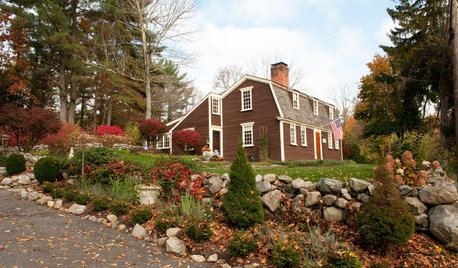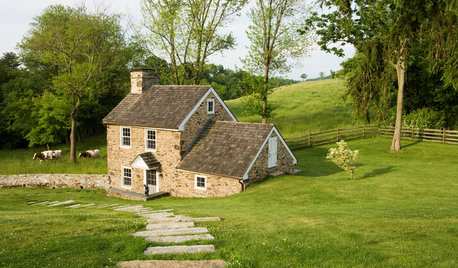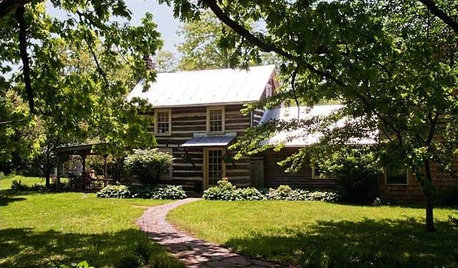When the 'restoration' is inauthentic
FranVAz7
20 years ago
Related Stories

HOUZZ TOURSHouzz Tour: A Boston Brownstone Is Restored to Glory and Then Some
Victorian-era architectural details create a strong base for an eclectic mix of furniture, accessories and modern art
Full Story
HOUZZ TOURSMy Houzz: Artful Restoration for a Brooklyn Brownstone
Historic detail balances with modern finishes and furnishings in this thoughtfully renovated, art-filled home
Full Story
TRADITIONAL HOMESMy Houzz: Loving Efforts Restore a 1787 Farmhouse
Careful attention to original details preserves and revives a vacant New England home with a considerable history
Full Story
HOUZZ TV FAVORITESHouzz TV: See How Early Settlers Lived in This Restored Pilgrim House
Passionate restoration and preservation efforts give a 1665 home an honored place in the present
Full Story
REMODELING GUIDESReplace vs. Restore: The Great Window Debate
Deciding what to do with windows in disrepair isn't easy. This insight on the pros and cons of window replacement or restoration can help
Full Story
ARCHITECTUREBack to the Futuro: Tour a Lovingly Restored ‘Spaceship’ Home
Travel back to the ’60s Space Age with a rare glimpse inside an original House of the Future
Full Story
BEFORE AND AFTERSKitchen of the Week: Classic White Farmhouse Style Restored
A couple remodel their kitchen to better match their 19th-century Oregon home’s style
Full Story
BEFORE AND AFTERSRestoration Rallies a 1790 Stone Springhouse
An old outbuilding gets a new purpose — several purposes, that is — thanks to careful efforts by stonemasons and architects
Full Story
CRAFTSMAN DESIGNMy Houzz: Small-Space Living in a Restored Bungalow
See how this homeowner celebrates his personal style, his flea market finds and the heritage of his 1919 Long Beach home
Full Story






mjsee
ginny12
Related Professionals
Hershey Landscape Architects & Landscape Designers · Bell Gardens Landscape Contractors · Clearlake Landscape Contractors · Damascus Landscape Contractors · Forest Hills Landscape Contractors · Fort Atkinson Landscape Contractors · Post Falls Landscape Contractors · Santa Maria Landscape Contractors · Ft Washington Siding & Exteriors · Lawrenceville Siding & Exteriors · Millburn Siding & Exteriors · Paramus Siding & Exteriors · Woodland Hills Siding & Exteriors · Merrimack General Contractors · Pinewood General Contractorsinkognito
FranVAz7Original Author
ginny12
inkognito
tessasdca
FranVAz7Original Author
ironbelly1
FranVAz7Original Author
kategardens
FranVAz7Original Author
gillespiegardens
ginger_nh
PucPuggyII
FranVAz7Original Author
ironbelly1
FranVAz7Original Author